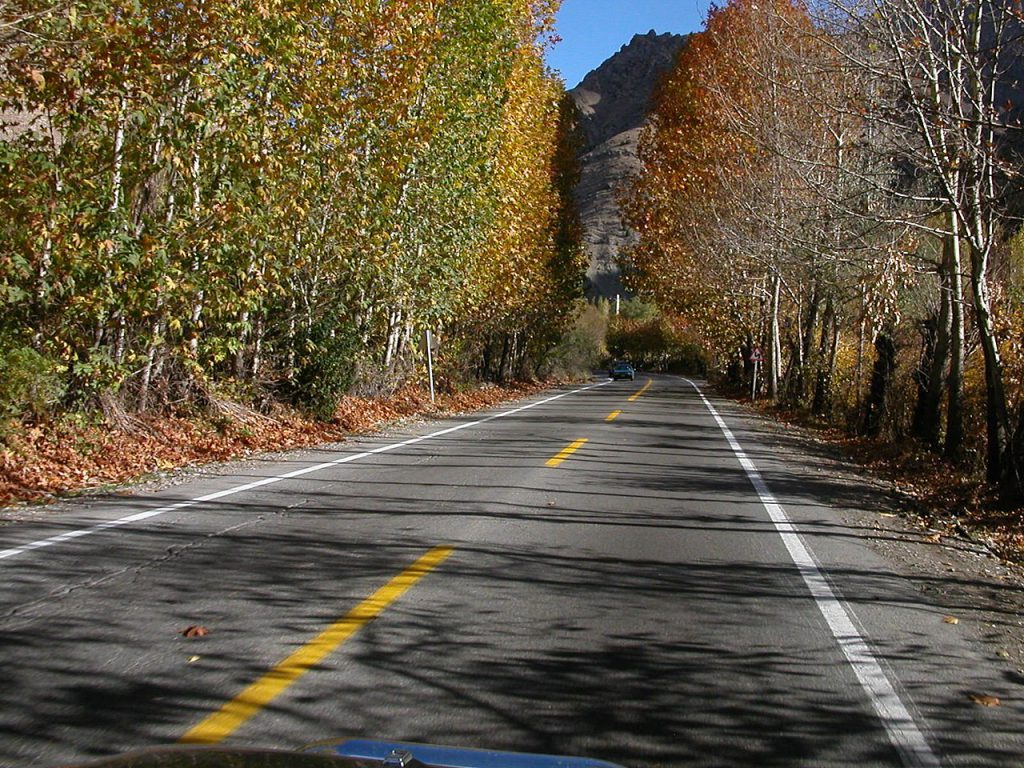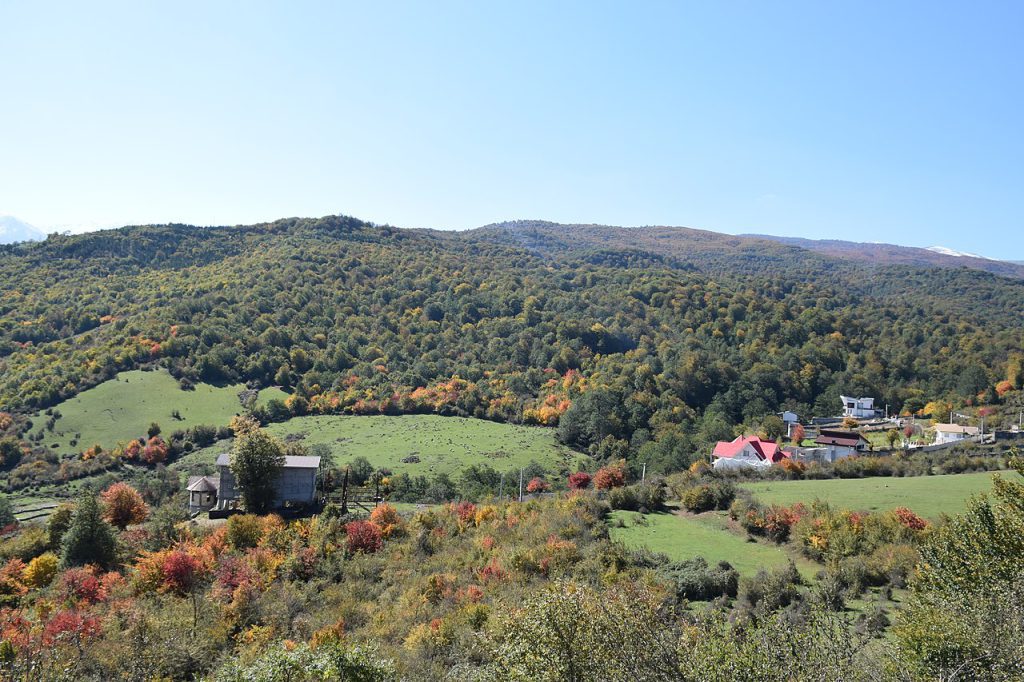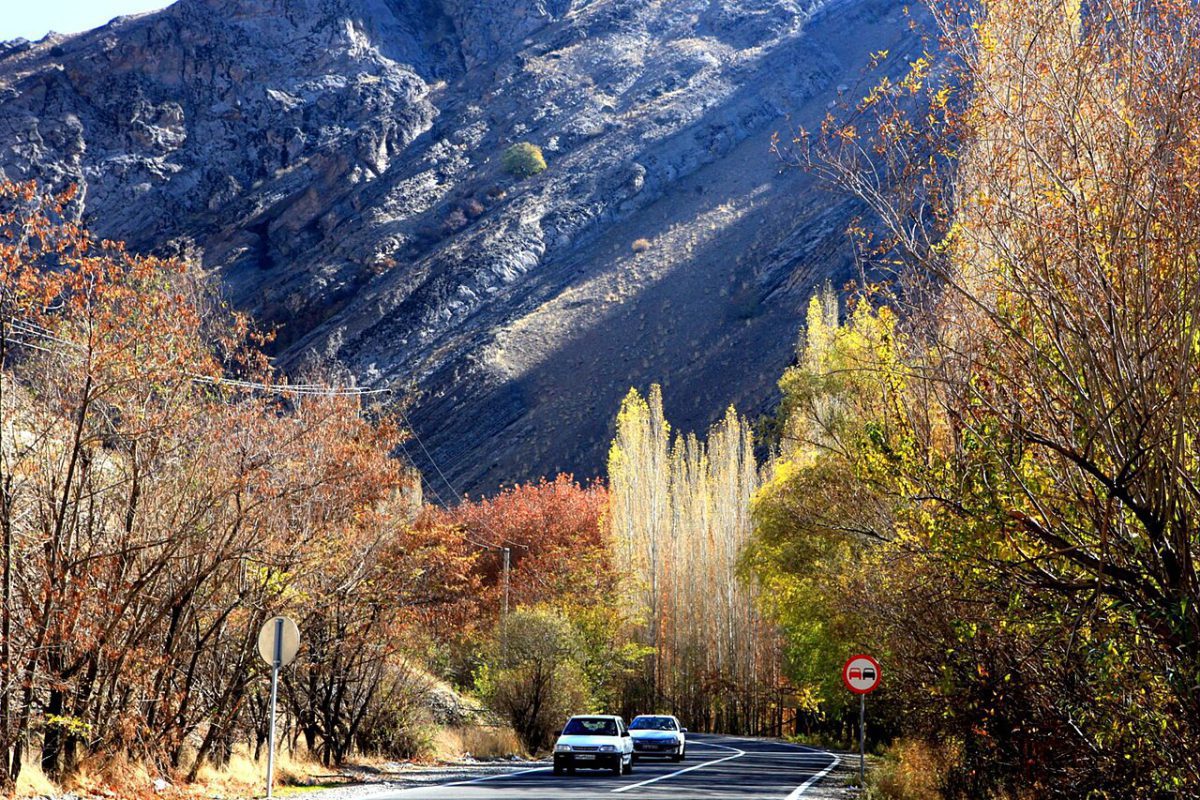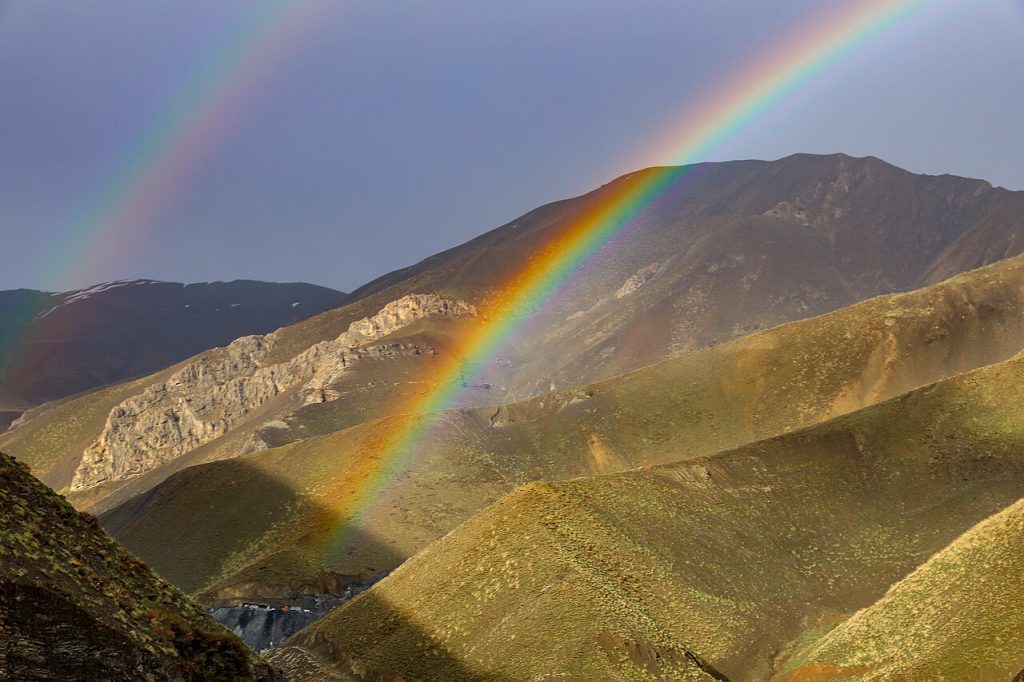Table of Contents
Winding its way through the majestic Alborz Mountains, Chalus Road—officially known as Road 59—offers an unforgettable journey from Tehran and Karaj to the stunning shores of the Caspian Sea. Spanning approximately 160 kilometers, this scenic route is a marvel of engineering, featuring an impressive array of bridges and tunnels that elegantly navigate the rugged terrain. Constructed in the 1930s during Reza Shah’s reign, the road not only serves as a vital connection between cities but also as a gateway to breathtaking landscapes that captivate travelers at every turn.
As you traverse Chalus Road, the lush Hirkani forests envelop you in a blanket of greenery, while panoramic views of the mountains create a dramatic backdrop. Each bend in the road reveals a new vista, inviting you to pause and take in the natural beauty surrounding you. Whether you’re embarking on a leisurely drive or a weekend getaway, the enchanting sights along this historic route make it a cherished destination for both locals and visitors alike.
History of Chalus Road

The journey of Chalus Road traces back to the Qajar era when most paths across Iran were narrow and challenging. It was under the reign of Naser al-Din Shah that significant changes began, as an Austrian engineer named Gastigirkhan was commissioned to widen both Chalus Road and the nearby Haraz Road. This enhancement allowed for multiple horses to travel side by side and enabled carriages to navigate these routes more comfortably.
However, the importance of road infrastructure became even more apparent during World War I. The occupying forces faced logistical challenges in transporting armored vehicles, prompting a swift expansion of roads to facilitate military operations. This era underscored how vital road development became, especially as tensions with Russia loomed large during Reza Khan’s tenure.
By 1930, the vision for Chalus Road took a more definitive shape when Russian engineer Alexander Chernetsky oversaw its design and construction. This ambitious project featured an impressive array of tunnels and bridges, ultimately earning the road its reputation as one of the most beautiful in the world. The subsequent construction of the Karaj Dam in 1961, paired with a rise in restaurants and accommodations along the route, breathed new life into this historic pathway. As Chalus Road evolved, it transformed from a mere travel route into a vibrant corridor of development, connecting people and places with its stunning vistas and rich history.
Significance of Chalus Road
Despite the emergence of modern highways designed to ease traffic congestion, the historic Chalus Road remains a cherished route for many Iranians. While new roads promise speed and efficiency, they lack the soul and character that Chalus Road embodies. This scenic path holds a special place in the hearts of the Persian people, who see it not merely as a means of travel, but as a vital connection to their heritage and the natural world. The emotional ties to Chalus Road run deep, making it more than just a route—it’s a journey into the essence of what it means to be Iranian.
For many, driving through Iran along Chalus Road is a retreat from the chaos of urban life, offering a chance to reconnect with nature and with each other. As they navigate its winding turns, travelers escape the clutches of city pollution and the stresses of modern living. This road serves as a sanctuary, inviting people to reaffirm their bonds with the environment and with each other. In a rapidly changing world, Chalus Road stands as a testament to the values of tradition and the importance of preserving spaces that resonate with the spirit of the community.
Top Attractions on Chalus Road

Kelardasht
Kelardasht, located 50 kilometers from Chaloos Iran, is a natural gem tucked away in the Mazandaran highlands. The region is renowned for its forests, lakes, and idyllic climate, drawing tourists year-round. Starting from Marzanabad, the journey to Kelardasht takes you through charming villages and breathtaking landscapes, including the famed Mazichal and Abbasabad forests.
Kelardasht’s diverse beauty also includes highlights like the Akapel Waterfall and scenic valleys. It’s the perfect escape for those seeking tranquility amidst nature’s wonders, offering endless exploration of its pristine environment.
Dizin
Dizin has evolved into a premier tourist destination year-round, drawing visitors with its cool summer climate and winter snow ideal for skiing. Located 75 kilometers from Karaj, this international ski resort offers world-class slopes, including grass skiing, and features gondolas, chairlifts, and a variety of activities such as tennis, volleyball, and horseback riding. The stunning mountain views make it a popular retreat for nature lovers and sports enthusiasts alike.
Dizin’s proximity to Chalus Road allows easy access to the resort via two routes, offering adventurers a chance to enjoy both winter and summer sports. Whether you’re skiing down the slopes or hiking the nearby peaks, Dizin provides a perfect blend of relaxation and excitement.
Kandovan Tunnel
The Kandovan Tunnel is a masterpiece of engineering that connects Karaj to Chalus County, carving its way through the mountains of the Alborz range. Built during the Pahlavi era, it took three years to complete and dramatically improved accessibility, shortening travel times and making the route passable year-round.
This iconic tunnel, stretching nearly 2 kilometers, stands as a testament to the perseverance and ingenuity of its time. The tunnel’s historical significance and its role in shaping the Chalus Road make it one of the most famous landmarks on this scenic route.
Karaj River
The Karaj River runs alongside the Chalus Road, offering a serene, scenic escape from urban life. Winding through the Karaj and Shahriar plains, this protected river boasts lush greenery and vibrant autumn colors, making it a hotspot for camping and hiking enthusiasts. Following its course leads you to the impressive Karaj Dam and the quaint village of Varian, providing a delightful journey through nature.
At the Karaj Dam, also known as the Amir Kabir Dam, visitors can enjoy fishing, hiking, and picnicking by the picturesque reservoir. The dam’s pristine surroundings, vibrant skies, and calming waters attract photographers and families alike. The area is not only perfect for recreational activities but also offers an incredible overnight camping experience by the lake.
Sepahsalar Village
Nestled just 15 kilometers from the Karaj Dam, Sepahsalar village stands as a picturesque gem along the Chalus Road. The village is graced by a gentle river that weaves through its heart, eventually feeding into the larger Karaj River. This flowing waterway nourishes the lush greenery around, creating a serene environment that beckons nature lovers and travelers alike. Visitors to Sepahsalar are often enchanted by its favorable climate, which complements the stunning landscapes, making it an ideal spot for a peaceful retreat.
One of the highlights of this charming village is the Sepahsalar Waterfall, a stunning natural feature that should not be missed. A leisurely two-kilometer walk from the village leads you to this breathtaking site, where the waterfall cascades gracefully from a height of 10 meters. Nestled between two towering rocks, the waterfall’s beauty is magnified as the space narrows, creating a dramatic effect that captivates all who visit. Whether you’re seeking tranquility or a touch of adventure, Sepahsalar offers a delightful escape into nature’s embrace.
Hidden Lake
Farakhin Lake, hidden deep within the forests of Nowshahr, is a secluded paradise accessible only with local guidance. Surrounded by towering trees and untouched by the masses, the lake offers a pristine environment perfect for swimming, boating, and peaceful reflection.
Visitors to Farakhin are urged to protect this natural treasure by respecting the environment. Its remote beauty and crystal-clear waters make it a perfect getaway for those seeking solitude in nature, with the best visiting months from late April to late September.
Things to Do on Chalus Road

Nature’s Beauty
The Chalus-Karaj road is renowned for its breathtaking natural beauty, making it a beloved route to northern Iran. Each season brings its own charm, but springtime is particularly enchanting, with vibrant blooms and flowing rivers that showcase nature at its finest. Autumn, on the other hand, transforms the landscape into a canvas of gold, yellow, and red, as trees don their seasonal attire.
While this picturesque scenery captivates travelers, caution is advised during fall, as rain showers can lead to slippery conditions and sudden floods. Embracing the stunning vistas while being mindful of nature’s unpredictability makes every journey along Chalus Road a memorable one.
Culinary Delights
As you traverse the stunning Chaloos Iran, a culinary adventure awaits at its charming restaurants. Each stop along this winding path presents a delightful array of Iranian and international dishes, perfect for any mealtime. Don’t miss the opportunity to indulge in local specialties like Baghala Ghatogh—a savory stew featuring beans and fragrant dill—or the rich Mirza Ghasemi, a mouthwatering blend of eggplant and tomatoes.
Complement your meal with flavorful kebabs, marinated to perfection with regional spices, and don’t forget to enjoy the fresh bread that accompanies these dishes. The combination of breathtaking landscapes and delicious cuisine creates an unforgettable experience that tantalizes the taste buds and soothes the soul.
FAQs about Chalus Road
Q1: What is Chalus Road known for?
A1: Chalus Road, officially known as Road 59, is famous for its scenic journey through the Alborz Mountains, connecting Tehran and Karaj to the Caspian Sea. It features lush Hirkani forests, dramatic mountain views, and engineering marvels like tunnels and bridges.
Q2: When was Chalus Road constructed?
A2: Chalus Road was constructed in the 1930s under Reza Shah’s reign, with Russian engineer Alexander Chernetsky overseeing the design and construction, which included numerous tunnels and bridges.
Q3: Why is Chalus Road significant to Iranians?
A3: Chalus Road holds emotional and cultural significance for Iranians. It is seen as more than a travel route, symbolizing a connection to heritage and nature, offering an escape from urban life and a reconnection with the environment.
Q4: What are some top attractions along Chalus Road?
A4: Top attractions along Chalus Road include Kelardasht, Dizin Ski Resort, Kandovan Tunnel, Karaj River, Sepahsalar Village, and the hidden Farakhin Lake, each offering unique natural beauty and recreational activities.
Q5: What makes the Kandovan Tunnel special?
A5: The Kandovan Tunnel is an engineering feat built during the Pahlavi era, connecting Karaj to Chalus. Stretching nearly 2 kilometers, it significantly improved accessibility and travel efficiency along the Chalus Road.
Last Words: Discover the Best of Chalus Road with a Customized Tour
Chalus Road, also called Road 59, winds through the beautiful Alborz Mountains and connects Tehran and Karaj to the Caspian Sea. It is about 160 kilometers long and features many bridges and tunnels. Built in the 1930s, it is important for travel and offers stunning views of nature. As you drive along Chalus Road, you will see lush forests and impressive mountain scenery.
If you’re planning to travel to Iran and want to experience the beauty of Chalus Road, consider taking a customized tour. At To Iran Tour, we specialize in creating professional Iran tours and travel packages that cater to your preferences. Whether you’re seeking adventure, relaxation, or cultural experiences, we design a plan that fits your needs perfectly. Our team is dedicated to helping you have an unforgettable experience in Iran, making sure every moment is special.
Let us guide you through the enchanting landscapes of Chalus Road and beyond with our expert Iran Tours. We’re here to help you create memories that will last a lifetime!


